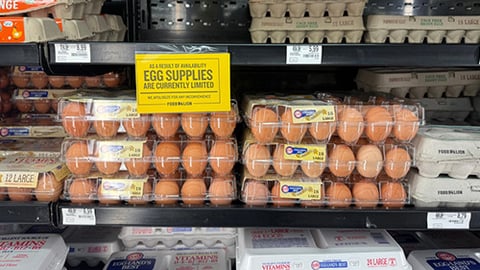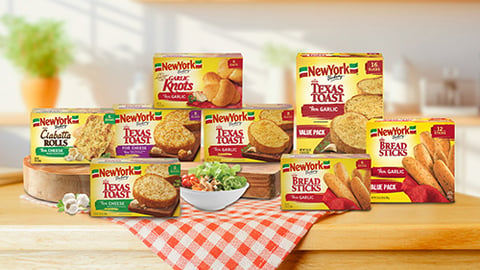How Bird Flu and Tariffs Are Affecting Shopper Behaviors
Consumers have a lot on their minds these days when weighing how to spend their food dollars, so FMI – The Food Industry Association is delving into those mindsets to help brands and grocers determine the best strategies for engagement. FMI recently shared insights into shopper attitudes that are shaping behaviors as another volatile year is underway.
Bird flu and tariffs are two issues that have grabbed headlines and are fodder for small talk and social media commentary. Those topics are also impacting how shoppers view grocery shopping, according to experts featured in FMI’s recent media briefing, “2025 Inflation and Food Price Outlook.”
[RELATED: Trump, Tech and Toughness - Top Themes at NGA Show 2025]
On the hot topic of Highly Pathogenic Avian Influenza (HPAI) that is affecting the supply and price of eggs, data affirms that inflation-weary shoppers are all too aware of the situation. Just over half (51%) of grocery shoppers polled this month said that bird flu is a concern this year, up from 43% in January. The Consumer Price Index (CPI) for eggs continue to rise, too.
“That carries weight bringing food-at-home inflation up. Most people now that we are dealing with a serious and recurring issue with avian flu,” said webinar presenter Dr. Ricky Volpe, associate professor of agribusiness at California Polytechnic State University (Cal Poly).
Andy Harig, VP of tax, trade, sustainability and policy development at FMI, said that shopper concern about egg prices is affecting their decisions at the point of sale. “We see that consumers are nimble and are bringing flexibility to the egg situation. They are buying different brands, maybe buying different kinds of eggs, shopping at different stores, substituting eggs with other products or in some cases, just buying less,” he said, adding, "This is a shopper who has been through a lot on in the last five years and who is adapting.”
Meanwhile, uncertainty around tariffs, especially given the back-and-forth nature of tariff announcements and timing, is also taking a toll. In March, 54% of shoppers said they are concerned about increased tariffs on imported food, compared to 49% in January.
“What the cost for the consumer will be is an open question. When we see tariffs, it is rarely a 1-to-1 transaction. A 25% tariff does not necessarily translate to a 25% increase in a tomato (price) and the more processed a food is, there tends to be less of an impact,” Harig explained, adding that the situation does have important supply chain effects. “We think it’s important to talk about how integrated the food supply is, particularly the relations with Mexico, the U.S. and Canada.”
The HPAI and trade situations that pose different impacts on pricing and pricing perceptions, reflect overall volatility when it comes to the cost of groceries. Right now, 71% of shoppers are concerned about rising prices, up from 68% in January 67% in September 2024 and 69% in February 2024, according to data shared in the briefing.
“In general, inflation is flat but it is propped up to the extent that it is still advancing due to a few outliers that continue to be troublesome and see above-average inflation rates,” pointed out Volpe.
On a more positive note, just as pricing concerns are lingering, so is consumer resilience in its various forms. According to data shared by FMI, 77% of shoppers reported that they have "some" or "a lot" of control over their grocery spending and many agree that cooking at home is still the most affordable option.
“The budget-conscious shoppers are focusing on food at home because that’s where inflation is slower,” noted Volpe.
Added Harig: “On a fundamental level, they understand what is driving food prices and are highly engaged in issues. An educated shopper is a good shopper, in the view of FMI.”






